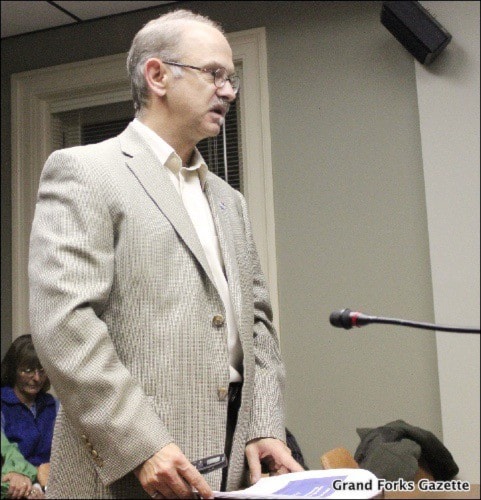Nitrate levels in Grand Forks’ water wells aren’t a major concern according to an engineering consulting firm.
Remi J. P. Allard, senior hydrogeologist from Piteau Associations Geotechnical and Hydrogeological Consulting Engineers, gave a presentation to city council at a recent meeting to discuss the city’s wells and its condition.
As a part of the presentation, Allard noted groundwater protection, which is a new mandate from Interior Health Authority, is also a part of future steps for the city.
“The issues in Grand Forks, which are items that are being looked at but aren’t necessarily issues that are a cause for concern, are that some people in Grand Forks think there’s a really big nitrate problem,” he said during the meeting. “However, in the areas around your wells, there isn’t too much of a problem.”
Nitrate contaminated water, caused by bad irrigation or fertilizers, pose health risks to people leading to sickness and some cases, death.
The recent Kettle River Watershed study pointed out nitrate-nitrogen groundwater levels range from more than 0.01 mg/L to less than 30 mg/L, with a median of 3.4 mg/L. The Canadian Drinking Water Guideline to safely drink water is 10 mg/L nitrate-nitrogen level.
“Your wells all have low concentrations of nitrate which is good … and the maps show how nitrate concentrations have changed over time,” said Allard.
“Well 2 (along 75th Avenue, near Hutton school), which is your work horse, shows that nitrate levels have been going down since early 2000, went up for a bit, and have since gone down.”
When they looked closer, Allard noted attention should be paid to the agricultural activity, commercial residences and institutional practices.
Other issues brought up were the total delivery capacity of the well (which deals with how closely the wells are located together and the well’s ability to provide water in the long run), well efficiency (damage from mineral encrustation), bacteria in the wells (caused by farms), the well’s vulnerability, and the age of the wells.
The City of Grand Forks currently has five operating wells. The first well was drilled in the 1940s and hasn’t been in operation since the 1980s.
Well 2 was drilled in 1956, Well 3a (near 68th Avenue) in 1969, Well 4 in 1977 and Well 5 (both near 70th Avenue) in 1988. The most recent well built is Well 3 (near 3a, also near 68th Avenue) in 2000.
“Some wells are pushing 50 to 60 years old, and they’re like any other asset you have in the city, they need eventual replacing. I’m not saying they need to be replaced right now but we are identifying which ones are a priority to be replaced and in what order,” said Allard.
“Your most valuable well is 3 because it’s your newest one and will likely last longer,” he said.
He added Well 2 is at the top of the list to be replaced because of its age, followed by Well 3a and 4 due to their proximity to each other.
“What you should do is put aside some money to drill another well sometime in the future,” Allard said.
“The point of this exercise is to identify your priorities and to get you thinking about those options.”
Mayor Brian Taylor explained that nitrate has always been a concern in the city, with concern to two or three of the wells in particular.
“We learned that in fact, the nitrate plums are not moving towards that direction which is good news for us,” he said during the meeting. “Nitrate has been a concern for many years and it’s primarily ground cropping in some of the areas, in particular the potato fields are one source. The fertilizing habits of some of the farmers in the area have changed and so the problem doesn’t seem to be getting worse.”
Taylor noted it was good news during the presentation and nitrate levels seem to be decreasing overall.
“It has been detected in various private wells around the city and there have been wells shut down because of it. It was a big concern but it’s timely that we have been getting some reassurance lately,” Taylor continued. “We’re really diligent in terms of water testing. There are rumours that go around and there’s some substance to the rumour but this should lay to rest a lot of concerns that people have expressed.”
The city is continuing to develop a long-term plan for the development of another well in the future.
“We looked at where you could put a well in the city where you wouldn’t have to deal with nitrate issues, good water quality and not have to deal with your existing wells,” said Allard.“We did find a location in the future for another well, which we call Well 6, which is south of Well 3a.”
Allard added the next project they are working on is the Groundwater Protection Planning, which is part of Interior Health Authority’s new mandate. The protection plan will focus on creating a contingency and emergency response plan, as well as various methods to monitor and protect local water sources.
